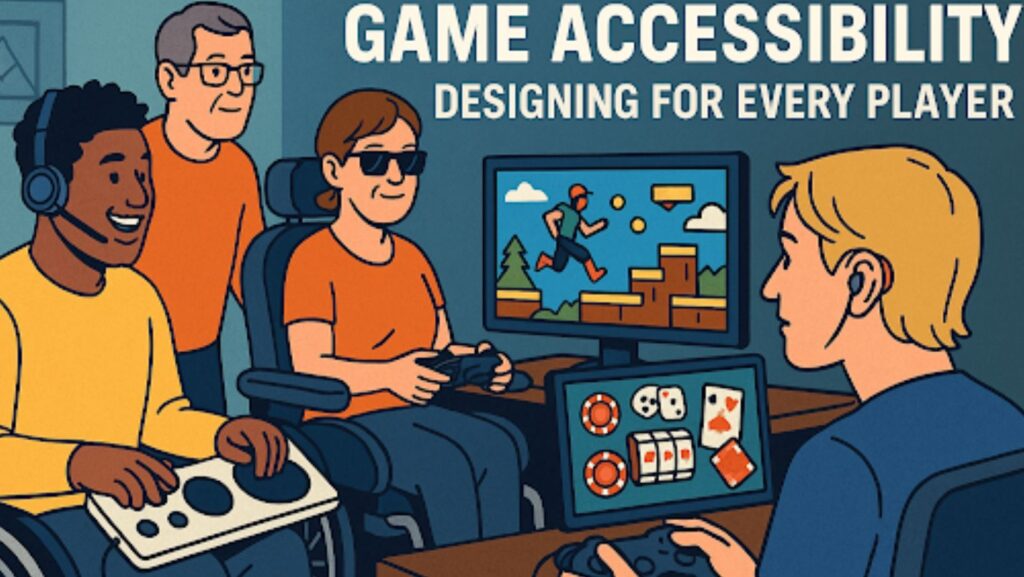Game accessibility has shifted from a side issue to a central point in development. Modern studios recognize that creating games for everyone makes both social and business sense. By designing with accessibility in mind, developers open doors to millions of players who might otherwise be excluded. Services like casino offers at 1xBet Ireland also highlight the value of diversity in entertainment by tailoring experiences to fit a broad audience.
Why Accessibility Matters in Modern Gaming
Accessibility is not about adding extras. It is about making sure that everyone can join the fun. Games today are cultural events, not just entertainment. Excluding people because of physical or cognitive limits restricts both reach and revenue. A study by the World Health Organization estimated that over 1 billion people worldwide live with some form of disability. That figure shows the scale of the challenge — and the opportunity.
Developers who prioritize accessibility gain loyal communities. Players who feel recognized tend to stay with the brand. Accessibility also boosts reputation.
Key Principles of Inclusive Design
- Games should adapt to different input devices
- Visual and audio cues must work together
- Interfaces should be clear, readable, and consistent
Input Flexibility
Not every player uses the same device. Some need adaptive controllers, others rely on keyboards or voice input. Modern engines allow mapping of actions across devices. By offering customizable controls, studios remove barriers.
Subtitles, captions, and sound descriptions matter. Text should be easy to read, with scalable sizes and high contrast.
Games must include options like slower modes, tutorials, and simplified settings. This lets people with different learning styles enjoy the same content.
Spending Power of Players with Disabilities
| Region | Estimated Gamers with Disabilities | Annual Spending (USD) |
| North America | 46 million | 13 billion |
| Europe | 40 million | 12 billion |
| Asia-Pacific | 120 million | 25 billion |
These figures reflect only direct spending. They do not include ripple effects like content creation, streaming, and esports participation.
Accessibility Features Players Value Most
Developers often ask: what features make the biggest difference? Surveys from accessibility organizations provide answers.
- Fully customizable controls
- Subtitles and captions with size and style options
- Color-blind friendly design
- Adjustable difficulty levels
- Text-to-speech and speech-to-text functions

Games with these features rank higher in satisfaction ratings. They also see longer play sessions on average.
Some studios lead the way. They treat accessibility not as a bonus but as a duty.
Small teams also innovate. Many indie titles release with accessibility baked into mechanics. These studios prove that inclusion is not about budget size but about mindset.
Technology Driving Accessibility
AI assists by converting speech to text in real time. Cloud platforms allow games to run on simple devices. VR firms add comfort options like reduced motion blur and adjustable perspectives.
- AI-based voice recognition
- Cloud rendering for low-spec devices
- Adaptive VR controllers
- Real-time translation tools
- Haptic feedback for sensory support
These tools not only help players with disabilities but also improve overall quality for everyone.
Accessibility in Online and Competitive Gaming
Esports and multiplayer titles must not leave accessibility behind. Competitive gaming is now a career path. If barriers exist, talented players may be locked out.
As BBC wrote, “gaming subscriptions grow”. Tournaments are introducing adaptive setups. Platforms also improve streaming tools for better captioning. Accessibility in competitive gaming is becoming a standard rather than an exception.
Accessibility in Competitive Titles
| Feature | Adoption Rate in Major Tournaments |
| Subtitles for Streams | 85% |
| Adaptive Controllers Allowed | 60% |
| On-Site Accessibility Support | 70% |
Looking Ahead – The Future of Inclusive Play
The future of gaming is inclusive by design. Accessibility will no longer be a bonus option hidden in menus. It will be standard, expected, and essential.
As technology evolves, we will see seamless adaptive features across every platform. Developers who embrace inclusion now will lead the industry tomorrow.

